The Gibbon Experience
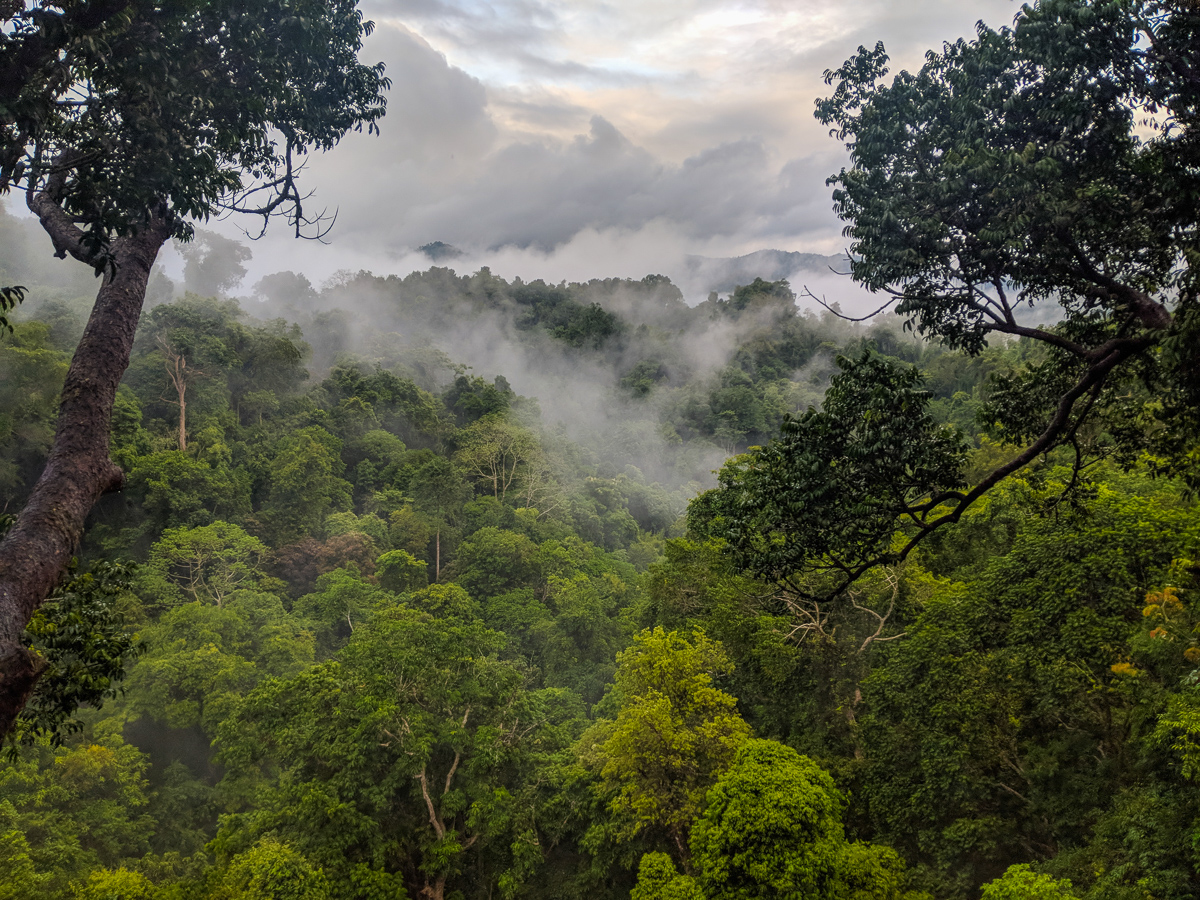
Imagine trekking through a tropical rainforest in northern Laos, engulfed by the sounds of toads, hawks, and cicadas. It’s raining, but the coverage from the trees keeps you relatively dry as you walk up, up, up the muddy hill. Your guide carries a machete to chop away overgrown bamboo. He gives you a piece of bark to eat and offers some wild fruit from a nearby tree.
After over an hour of hiking through the jungle, your group reaches the top of a hill. There hangs a single zip line disappearing over the canopy into the distance. You clip yourself onto the line with your harness and jump, cruising over the trees. There’s no sign of the ground below. Almost a minute later, you see a treehouse—your accommodations for the next two nights. And maybe, just maybe, you see the rare and endangered gibbons as their songs echo through the jungle.
Preparing for the Gibbon Experience
The Gibbon Experience is based in the Nam Kan National Protected area in northern Laos. You spend two nights sleeping in a treehouse accessible only by zip line.
The adventure begins at the Gibbon Experience headquarters located in the border town of Houaxay, Laos. Houaxay is easily accessible by bus via Chiang Rai or Chiang Mai, Thailand, as well as over land or water from Luang Prabang. It’s recommended you stay one night in Houaxay since your day begins at 8am and you have a good amount of hiking ahead of you.
You’ll watch a quick safety video, and afterwards the guides will immediately inform you that the video is ten years old and they use a completely new system. The video is full of useful advice such as, “Put your harness on like you would a diaper” as a woman in a skirt demonstrates how to zip line with the appropriate gear. Laotians have the tendency to deliver instructions in the strangest ways.
Getting to Nam Kan
After the safety briefing that you’ll quickly discard, you’ll be divided into groups according to the package you signed up for and assigned a pickup truck. There were 11 of us and several bags of rice distributed inside the truck and truck bed during the 2 hour ride to Nam Kan. We were joined by 3 more guides and 15 dozen eggs for the last hour of the ride, where we forged a river, dodged several tree branches and incoming vehicles, and raced along the unpaved muddy road.
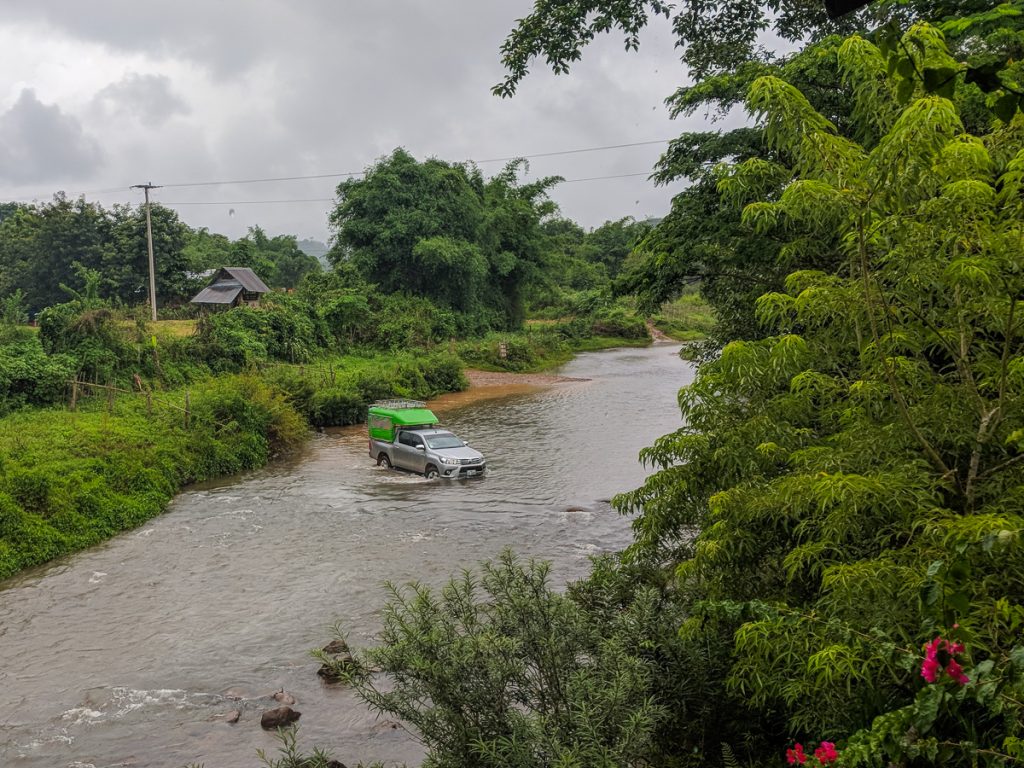
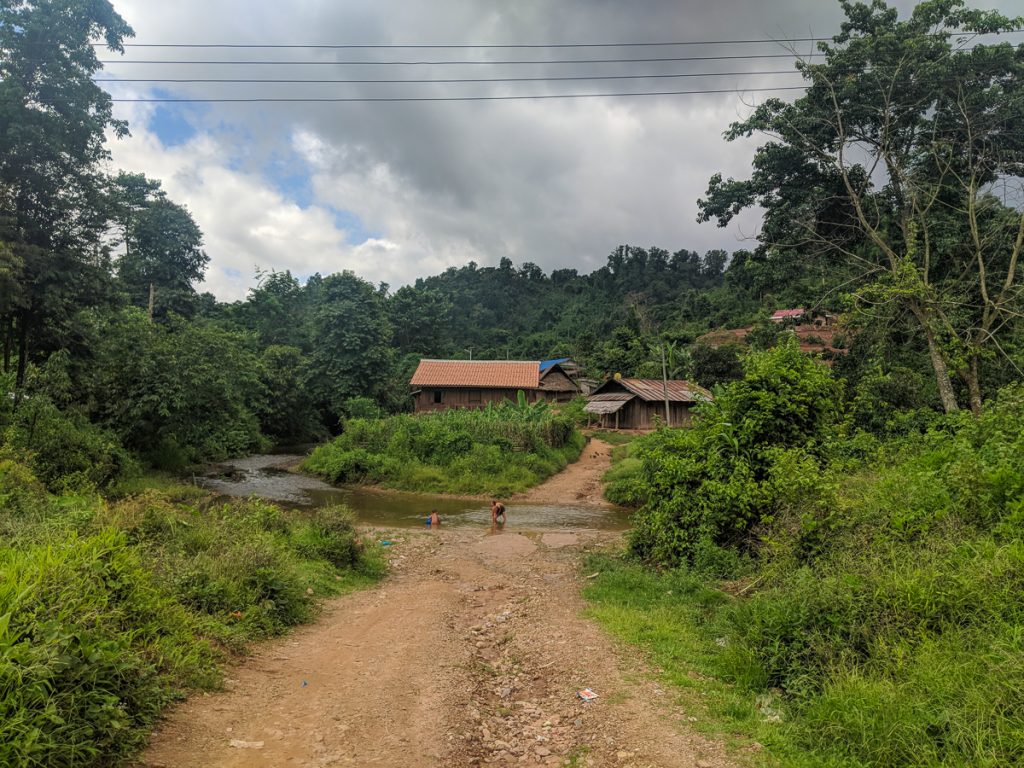

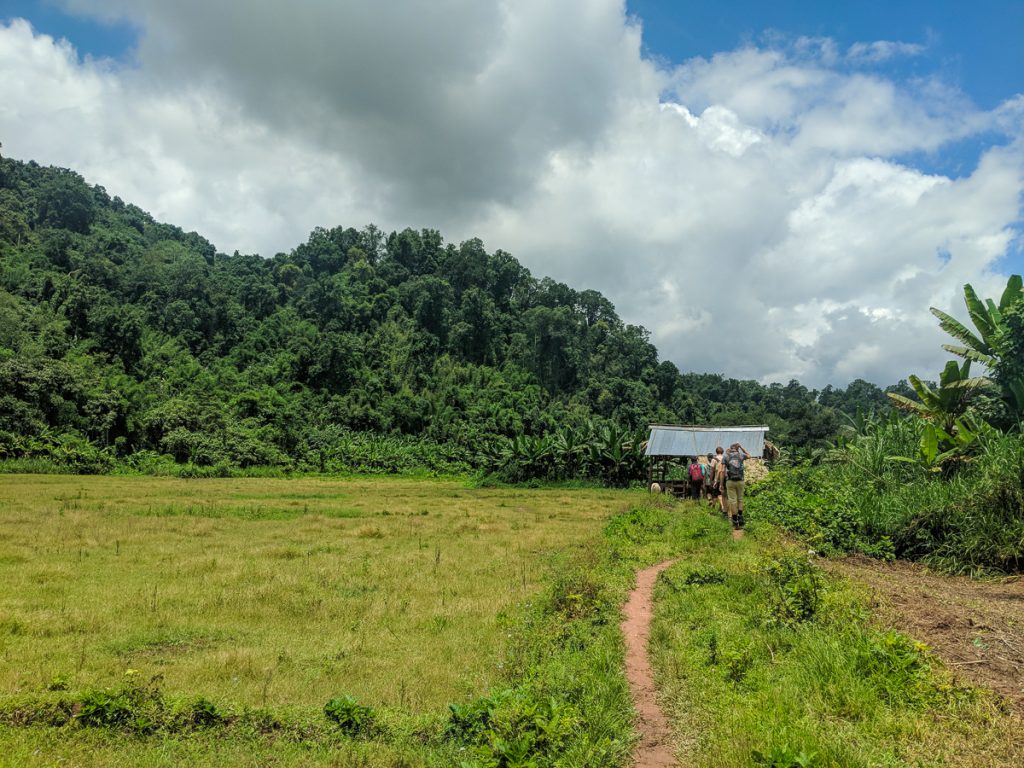
Trekking and Zip Lining
We reached the village at the base of the jungle and began our 2 hour hike over the rice fields and into the rain forest. After stopping for lunch, we hiked up until we reached the base camp and equipped ourselves with harnesses.
The guide then gave us a proper safety demonstration on the first zip line. He showed us how to clip ourselves onto the line, operate the hand brake, and where to place both our hands. Then he promptly leapt from the platform, held on with one hand, and flipped upside down as he disappeared over the canopy.
The journey to the treehouse from base camp combined more hiking with zip lining across the forest. We probably zip lined the first day about 4-5 times in total, with the longest zip line being about 570 meters long.

We finally reached our treehouse around 3pm. The zip line connected directly to the treehouse and was the only way in or out. Five of us shared one three story house, which had enough solar power to give us light once the sun went down.

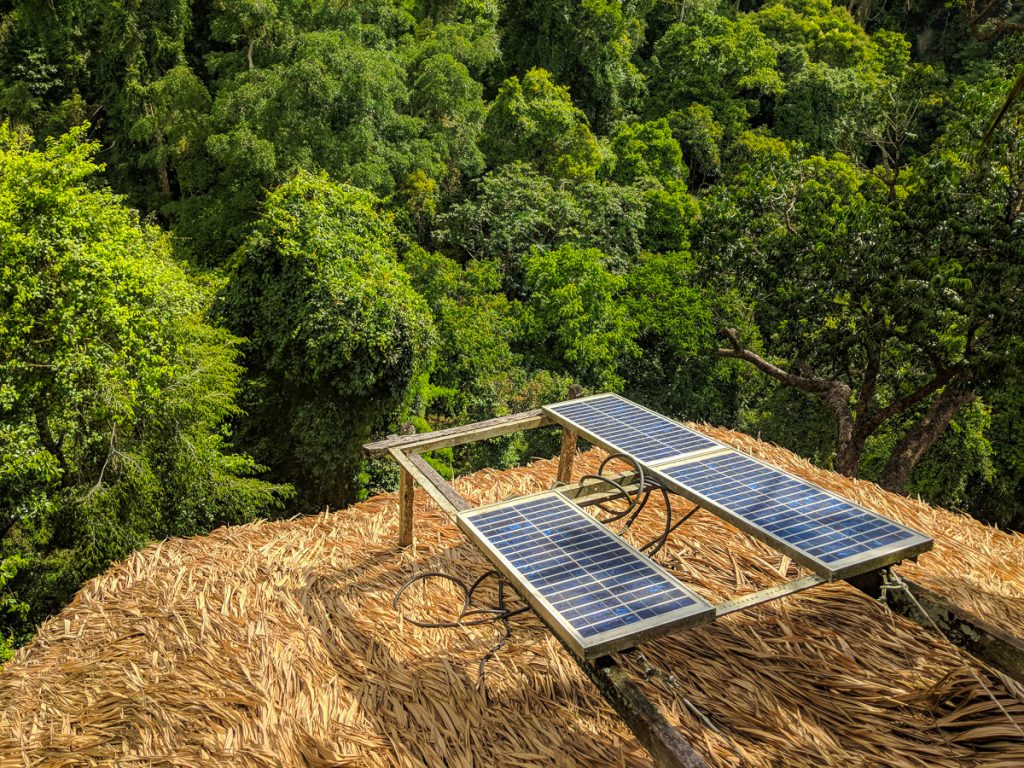

All meals were included in the tour, and the food was incredibly good, too.
Tired after a long day, our group turned in early.
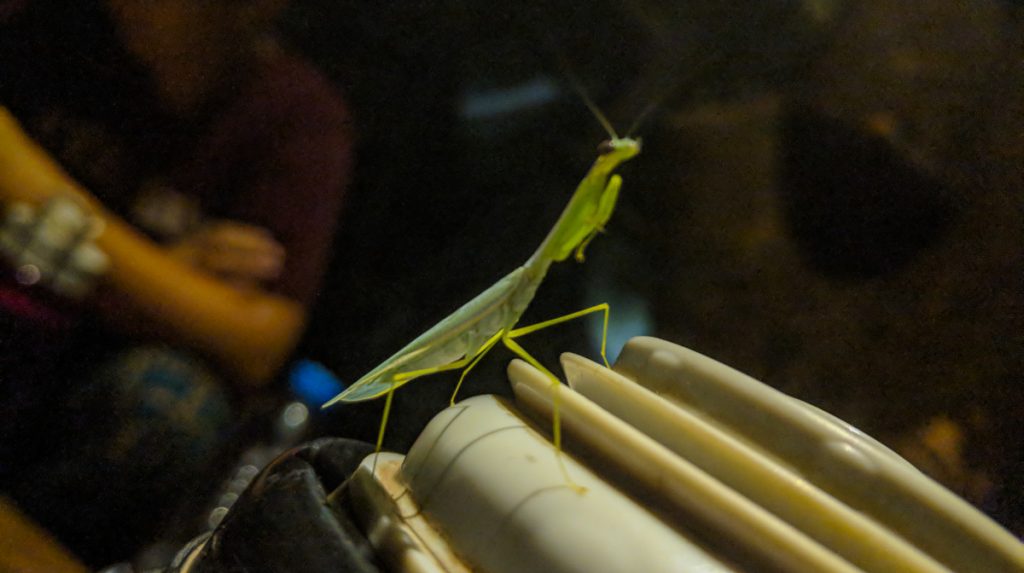
The next morning, we woke up early to the sounds of the gibbons singing. However, the gibbons were nowhere in sight. After breakfast, our group spent the day zip lining through the forest, avoiding leeches, and touring other treehouses. Treehouse #1, the largest treehouse, was our favorite, but we agreed we got to stay in the second best treehouse (#7).
Our group got to know each other better as well. One couple was visiting Laos from Spain, and the other two were digital nomads, Justin and Jade, who had previously worked with the Peace Corps in Madagascar and were now traveling the world.
My favorite part (aside from zip lining. And sleeping in a tree house. And listening to the forest sing.) was definitely taking a shower in the tree house. Check out the view:

After dinner, our guide brought us a bottle of Lao-Lao, a vodka-like rice whiskey made in Laos.
Gibbons!
The next morning, we awoke to the sounds…and SIGHTS OF GIBBONS! The guides and several people from camp joined us in our treehouse and we were able to spot a family of gibbons from afar. Unfortunately, my phone was unable to capture them from that far away, but it was such a striking and peaceful experience, watching them swing from the trees.
We ended up staying in the treehouse almost two hours after our scheduled leave time. The hike out of the jungle was significantly more muddy than the hike in, so I was slipping and sliding all over the place (the shoes I got to replace the shoes I broke in Indonesia/Thailand were not made for trekking). After reaching the village, I ended up straight up bathing in the river.
Reflection
The Gibbon Experience was one of my favorite activities of this entire trip. It came at a good time, too, because I had been feeling very fatigued after Thailand and zip lining through the forest finally got me past that wall. I absolutely loved Laos and was beginning to really look forward to going to Vietnam after talking to Justin and Jade about their time in Vietnam.
Spending three days in the rainforest away from everything also helped me realize a few other things:
- I love the idea of thru-hiking, but in reality, I couldn’t do more than two consecutive weeks of hiking. I used to want to hike the Appalachian Trail, but I’ve realized I enjoy the feeling of the hike being over more than the hike itself. Rinjani, Kinabalu, Everest, Kilimanjaro, and all of those mountains are definitely on my list of treks I’d like to do in my lifetime, but the AT… not so much.
- I’m seriously worried about returning back to the States. It’s easy to get comfortable and fall back into the routine of working a lot, watching too much TV, ordering food through Grubhub, taking a car everywhere, and overall just spending time doing things that aren’t very important because it’s so easy to do back at home. You’re either commuting to work or at work between 8am-6pm five days a week, and if you volunteer or have hobbies, your evenings and weekends are consumed by those. That doesn’t leave much time to cook food or wash your clothes or clean your house or just sit still.
- I want to live abroad. If I don’t move abroad, I will regret it.
Of course, timing is everything. I stayed in Houaxay for one more night before catching a two-day slow boat to Luang Prabang (everything moves slower in Laos). As I packed my things the next morning, I received a message from my roommate saying my cat was in the emergency room.